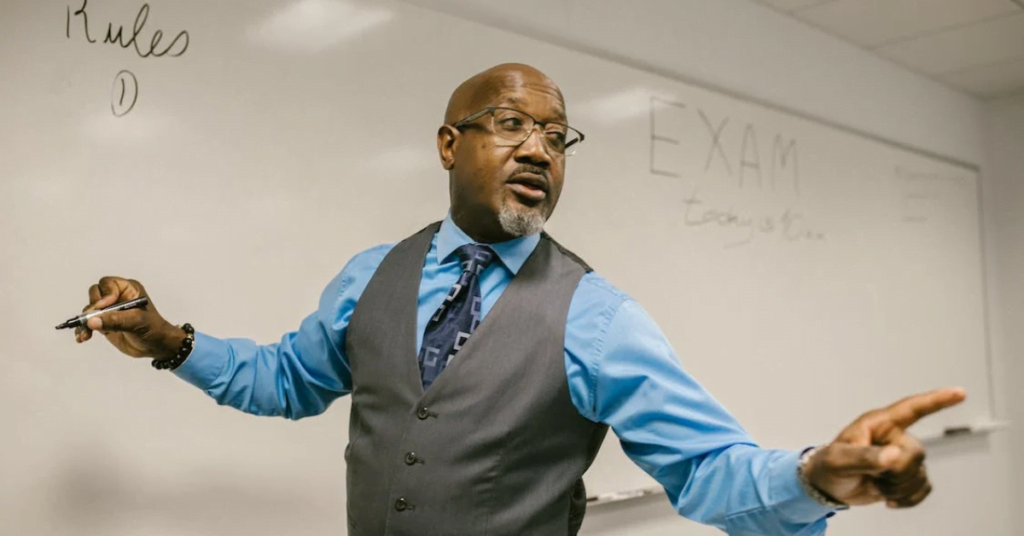By choosing to teach, you’re changing lives every day. Educating and inspiring young minds is such important work. As a Black teacher, you’re also leading by example and showing students what success looks like.
Teaching is a noble calling, but we know it doesn’t always pay the bills. With the pay gap and other inequities, managing money can be tricky.
Use the following 10 financial tips for Black teachers to take control of your money and still pursue your passion.
1. Negotiate Your Worth
Know your value and earn what you deserve. Black teachers make up about 7% of the workforce but studies show we earn around 5-10% less. Don’t settle for the first salary offer. Do your research and negotiate competitive pay when hired or if switching districts. Remember salary bumps for experience and advanced degrees. Build a case for higher pay and perks with data on average regional salaries, qualifications, and achievement.
2. Budget for Irregular Income
Teaching income fluctuates with summer months off and waiting for the first paycheck in the fall. Make an annual budget to plan expenses in advance. Calculate monthly averages for predictable costs like rent. Factor in summer savings for unpaid months. Also, budget for classroom supplies – the tax write-off helps but you shouldn’t have to break the bank.
3. Prepare for Emergencies
Having cash reserves prevents panic if an unexpected expense comes up. Try to build at least a $1,000 starter emergency fund. Next aim for 3 months’ worth of basic living expenses, then 6 months. Automate savings transfers from each paycheck. Even small deposits add up. That emergency cushion keeps you afloat if you need a car repair or AC replacement.
4. Make Debt Disappear
Pay down high-interest debts aggressively. Make minimum payments on all debts, then put any extra funds toward eliminating one debt at a time. Start with the smallest balance. Once that’s paid off, roll that payment amount into the next smallest debt, and so on. This debt snowball method builds momentum. Destroying debts faster improves your credit and gives you more cash flow.
5. Brown Bag Those Lunches
Packing breakfast, snacks, and lunch saves big dollars. Buy staple ingredients in bulk when they are on sale. Meal prep on weekends so weekday mornings are hassle-free. Bringing food also keeps you from overspending at restaurants or vending machines when hunger strikes. Enjoy cooking? Try batch-freezing individual portions for variety.
6. Fund Retirement Accounts
With summers off, it can be tempting to put off retirement savings. But time is on your side. Start early, even if it’s in small amounts. Sign up for 403(b)s and other workplace plans, especially if your district offers matching. Increase contributions with each raise. Max out workplace plans, then fund IRAs. Teaching pensions have gotten less reliable. Good thing compound growth boosts even modest savings over decades.
7. Insure Yourself
Don’t overlook disability and life insurance. A disability policy replaces income if you’re too sick or hurt to work. Get enough coverage to pay the bills if your salary stops. Also, get life insurance (ideally 10 times your income) so dependents are cared for if tragedy strikes. Review what coverage your district provides – you may need to supplement.
8. Cultivate Multiple Income Streams
During summer breaks or after school, take on side gigs like tutoring, summer school teaching, test prep coaching, or curriculum development. The extra income goes toward savings, investments, or pursuing hobbies and travel. Just be mindful of tax implications if you already have a full-time teaching position.
9. Collaborate with the Community
Trade tips and find mentors through groups like the National Alliance of Black School Educators. Your tribe shares hard-won lessons and cheerleads your wins. Local entrepreneur networks expand your side hustle prospects too. And students’ families can provide different kinds of support if money gets tight. It takes a village!
10. Pay Forward the Gift
As an educator, pay forward the gift of knowledge. Mentor aspiring teachers, especially students of color. Recruit youth into the profession by highlighting your career path. Support scholarships, workshops, and programs to diversify teaching. Instilling financial literacy in students equips the next generation. After all, information is power.
Stay hopeful and keep making those money moves! With grit and imagination, you can handle unpredictable income, build assets, and follow your teaching passion while being financially empowered. Now go inspire some minds!



